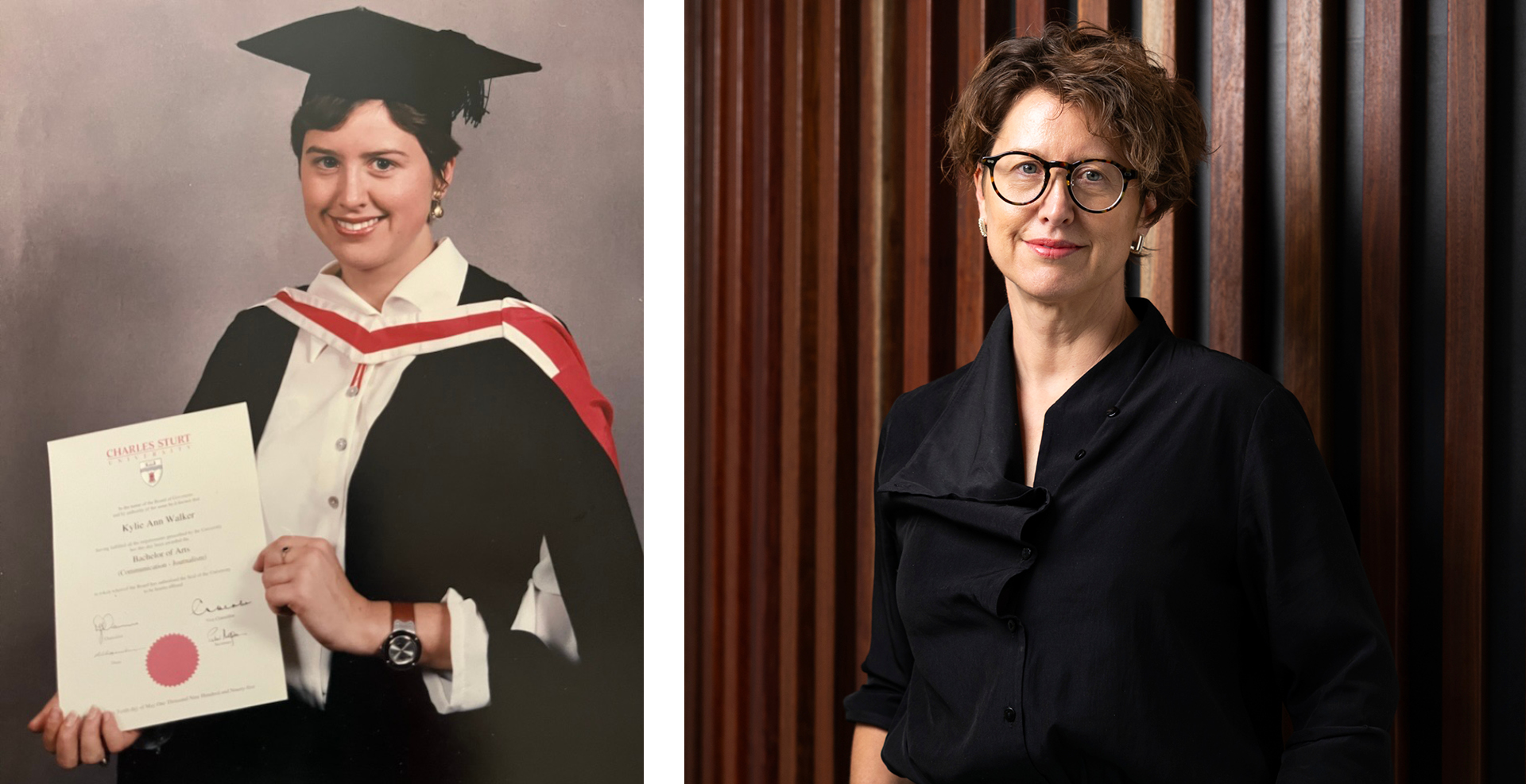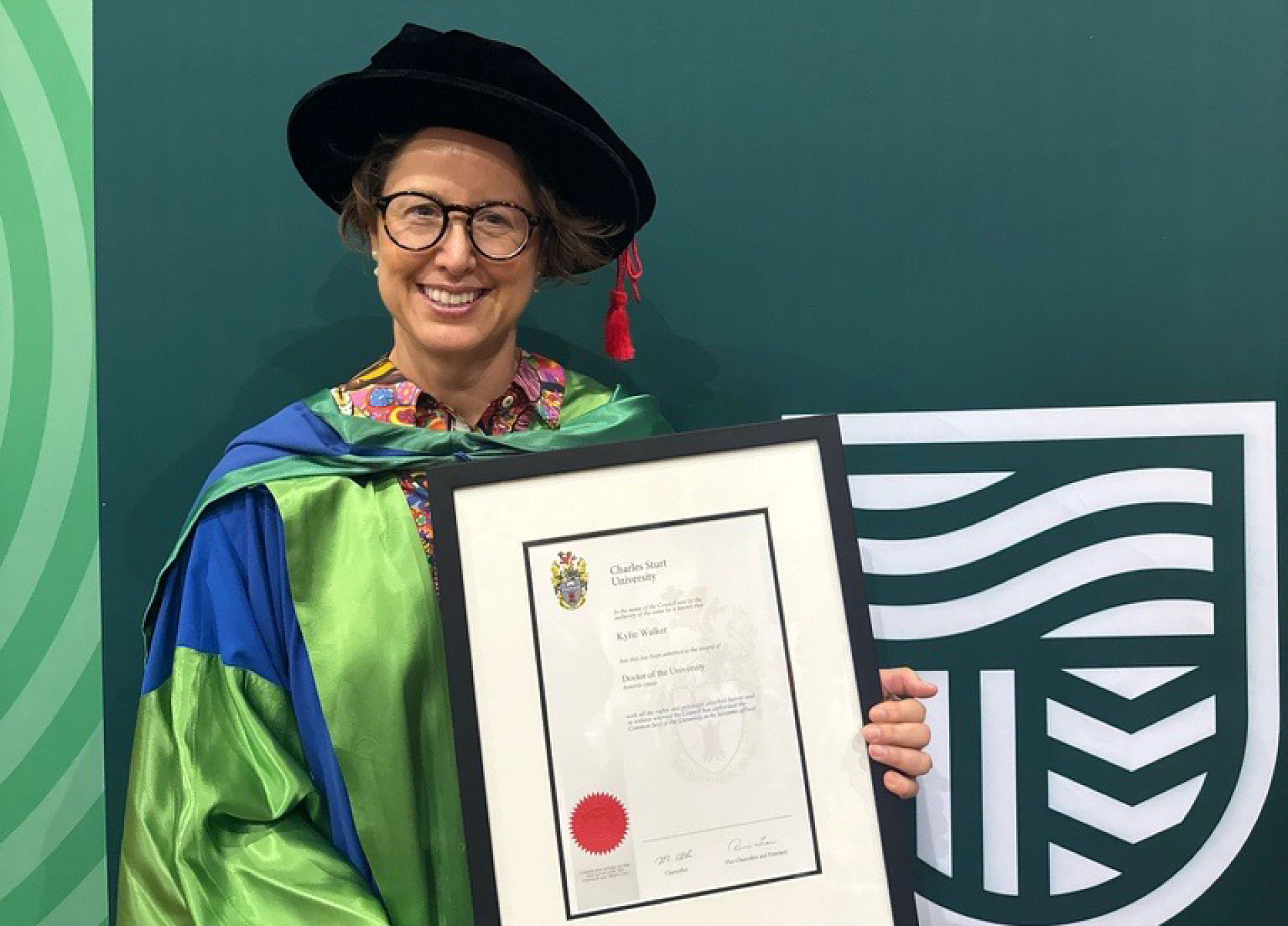Today, Kylie urged the 2025 graduating class to champion truth telling in our complex world of disinformation. This same principle has guided her throughout her career.
“Thirty years ago this month I stood among you as a journalism graduate: committed to the endeavour of inquiry; filled with hope for an informed and empowered society; determined to be a strong voice of truth, and an instrument of democratic freedom”, Kylie said.
Kylie started her career as a gofer – an entry-level reporter – at the Australian Financial Review, then spent a decade at the ABC and Australian Associated Press, where she witnessed many moments of Australian history in the making.
“Back then I could never have imagined stepping out of journalism to become an advocate for science, technology and education — and also for diversity and inclusion — but, for me, these passions have been an obvious evolution as I continue my quest in the search for knowledge: its creation, its application, and its exposition,” she muses.
Through my commitment to truth-telling, and open access to knowledge — a commitment I first made as a student of journalism here in Bathurst — I’ve had extraordinary opportunities to work with and on behalf of some of the world’s cleverest and most creative people, and conversely, some of the most vulnerable.
Kylie reflected on the meteoric rise of the role of technology in public information and at the very essence of how one gains an education.
“When I was in second year, the university decreed that assignments could no longer be hand-written. There was a ‘computer lab’ and students had to book time to access a machine to type up our work, then print it on a dot matrix printer before handing it in as a hard copy. At the radio station, audio was still edited by hand, with a razor and sticky tape. We all still bought newspapers in hard copy. The internet was the domain of a privileged few — it started to go mainstream just a few years later. And of course, social media had not yet been invented. AI existed only in science fiction”, Kylie reflected in her speech.
Communications technology today is deeply exciting. You can take a virtual reality tour of an ancient tomb buried in an underwater cave, or explore the surface of Mars. You can wear a special helmet that interprets your brainwaves so accurately you can make a robot move just by thinking about it. Even the processing power in a single mobile phone is astonishing compared with the desktop computers just 10 years ago.
But this extraordinary leap forward has come with new challenges.









